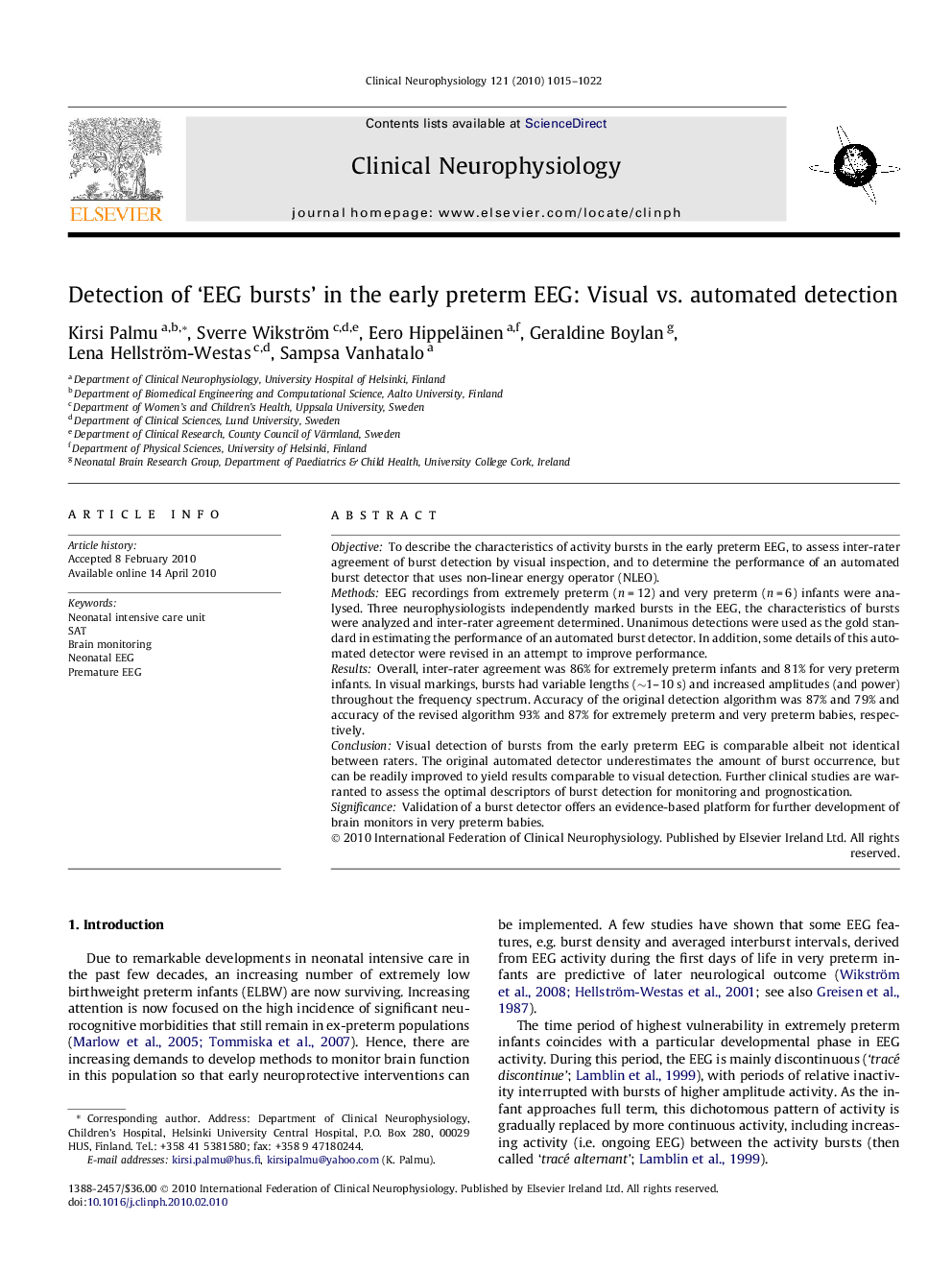| Article ID | Journal | Published Year | Pages | File Type |
|---|---|---|---|---|
| 3045924 | Clinical Neurophysiology | 2010 | 8 Pages |
ObjectiveTo describe the characteristics of activity bursts in the early preterm EEG, to assess inter-rater agreement of burst detection by visual inspection, and to determine the performance of an automated burst detector that uses non-linear energy operator (NLEO).MethodsEEG recordings from extremely preterm (n = 12) and very preterm (n = 6) infants were analysed. Three neurophysiologists independently marked bursts in the EEG, the characteristics of bursts were analyzed and inter-rater agreement determined. Unanimous detections were used as the gold standard in estimating the performance of an automated burst detector. In addition, some details of this automated detector were revised in an attempt to improve performance.ResultsOverall, inter-rater agreement was 86% for extremely preterm infants and 81% for very preterm infants. In visual markings, bursts had variable lengths (∼1–10 s) and increased amplitudes (and power) throughout the frequency spectrum. Accuracy of the original detection algorithm was 87% and 79% and accuracy of the revised algorithm 93% and 87% for extremely preterm and very preterm babies, respectively.ConclusionVisual detection of bursts from the early preterm EEG is comparable albeit not identical between raters. The original automated detector underestimates the amount of burst occurrence, but can be readily improved to yield results comparable to visual detection. Further clinical studies are warranted to assess the optimal descriptors of burst detection for monitoring and prognostication.SignificanceValidation of a burst detector offers an evidence-based platform for further development of brain monitors in very preterm babies.
